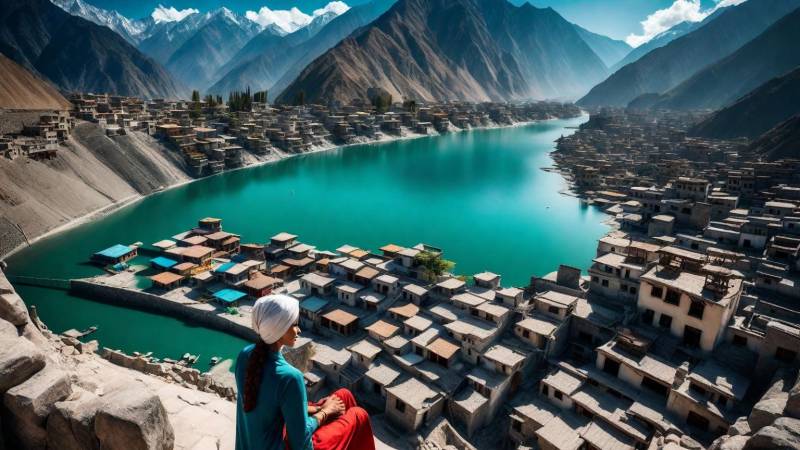
Gilgit-Baltistan is nestled in a spectacular natural landscape that features three of the world's greatest mountain ranges, the largest body of glaciers outside the polar caps, a mesmerising cold desert where powdered snow and dry desert dunes exist side by side, historical sites, innumerable waterfalls, streams, and lush meadows. The region possesses rich mineral deposits, including precious and semi-precious gemstones. Gilgit-Baltistan's geo-strategic location further heightens its significance as it is the only gateway to China, an all-weather friend and crucial geo-strategic and defence partner. Beyond the natural and strategic blessings, Gilgit-Baltistan suffers from two basic challenges: changing climate and fundamental constitutional rights.
Gilgit-Baltistan's quest for identity is dotted with never-ending sacrifices and struggles, which continue to date.
Climate change in Gilgit-Baltistan is a challenge of utmost importance. According to a UNDP report, the region's mountain communities face a threat from some 3,044 new glacial lakes, which have developed among the more than 7,000 glaciers. The glacial lakes have formed at an unprecedented rate due to the rapid melting of glaciers amid a warmer climate. Add to this the growing frequency and intensity of flash floods, mudflow and unprecedented and unusual rain and snow patterns, which have been devastating for the region's human, food, and water security. Natural calamities have devastated mountain communities.
Last year, flash floods wreaked havoc across Gilgit-Baltistan, damaging standing crops such as corn and orchards full of cherry and apricot trees. The floods also damaged the irrigation channels and hydropower stations, plunging several valleys into darkness.
Apart from sweeping away homes, these calamities affect infrastructure and disrupt people-to-people connectivity by cutting off the land connection between different regions. People living high up in the mountains face difficulty not only in connecting via land but also via technology, as many mountain communities are still forced to live without access to cellular or internet connectivity.
Frequent floods in various drains of Ghizer, Nagar, Hunza, Skardu, Ghanche, and Shigar districts have devastated these areas. The region lacks a financial structure to withstand the shocks from these frequent natural disasters or adopt climate mitigation strategies. The northern territory has an annual budget of over Rs116 billion for the fiscal year 2023-24. Of this, Rs74 billion has been allocated for non-developmental expenditures (salaries and bills), while a little over Rs28 billion has been allocated for developmental expenditures or less than 15% of the total budget outlay. This is a huge concern and a signal that the authorities and our policymakers are slumbering with no focus on resolving the problems faced by mountain communities due to climate change.
There is a need for awareness programmes locally and nationally to alert stakeholders about the consequences of climate change in mountain communities.
Tourism, a major source of income for the region, peaks during spring and summer, with large numbers of domestic and foreign tourists arriving. The region hosted its first international flight from Dubai in 2023. This year, international flights commenced on April 29, 2024, with two flights scheduled every week between Skardu and Dubai.
According to a report, more than half of the Gilgit-Baltistan population is directly or indirectly dependent upon the tens of thousands of tourists who visit annually. Without steps to mitigate the impacts of climate change, these tourists could be put in harm's way, thus affecting this valuable resource.
However, the deluge of tourists contributes to environmental hazards from increased vehicular traffic and emissions, as well as the associated generation of waste.
The region's fruit and dry fruit produce is another major source of income. It has helped improve the living standards of locals, and together with tourism, it has provided gainful employment for its fast-growing youth population.
On the commercial side, China's One Belt One Road (OBOR) initiative passes through this territory. As a result, it expects to experience a greater flow of truck traffic in the coming years.
Gilgit-Baltistan's ecosystem is at risk from the growing commercial and trade activities here. Trade and commercial activities which can bring economic prosperity are welcome, but it is equally important to adopt strategies and measures to cope with the environmental consequences that these trade and commercial activities may have for the region's ecosystem. Sustainable Policies and financial structures are necessary to ensure sustainable trade and human activities, which is the need of the hour to save generations and ecosystems from further devastations and calamities.

